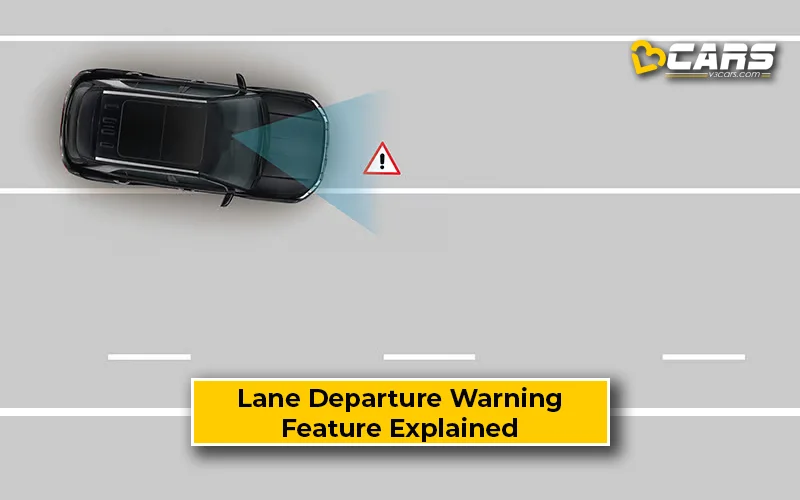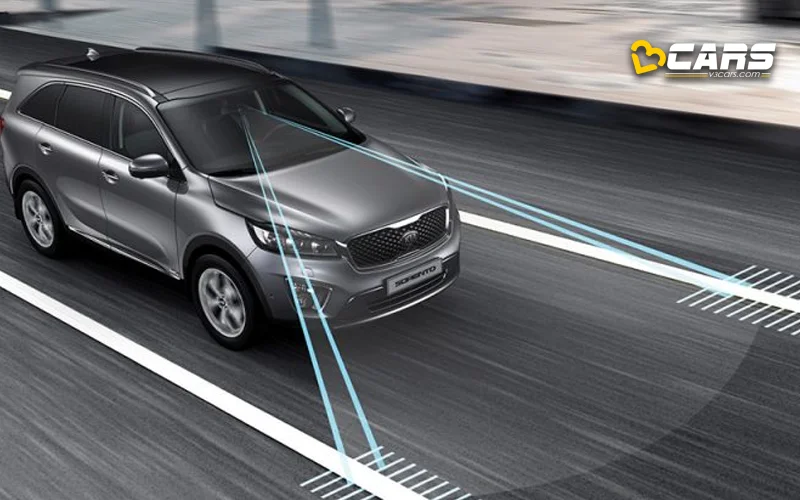Lane Departure Warning (LDW) – ADAS Feature Explained
Advanced Driver Assistance Systems (ADAS) play an important role in enhancing driver awareness and preventing accidents. Among ADAS features, Lane Departure Warning (LDW) is a useful feature that alerts drivers when their vehicle unintentionally begins to drift out of its lane. This feature, often paired with more active systems like Lane Keeping Assist (LKA), is becoming increasingly common, making our journeys safer.

What Is Lane Departure Warning (LDW)?
Lane Departure Warning (LDW) is a safety system designed to help drivers avoid crashes caused by unintentional lane drifting. It continuously monitors the vehicle’s position relative to lane markings on the road. If the system detects that the vehicle is veering out of its lane without the turn signal being activated, it issues an alert to the driver.
How Does Lane Departure Warning Work?
LDW systems operate using sensor technology and intelligent algorithms:
- Camera-Based Monitoring: Most LDW systems use a forward-facing camera, usually mounted near the rearview mirror on the windshield. This camera continuously scans the road ahead.
- Lane Marking Recognition: The system’s software analyses the camera feed to identify and track visible lane markers (white or yellow painted lines) on both sides of the vehicle. For proper functioning, these lane markings need to be clearly visible.
- Position Tracking: The system constantly calculates the vehicle’s position within its detected lane.
- Drift Detection: If the system determines that the vehicle is drifting too close to or crossing a lane marking, and the turn signal is not engaged, it triggers a warning.
- Types of Alerts: LDW systems use various methods to alert the driver:
- Visual Alerts: A flashing indicator light or a message displayed in the instrument cluster.
- Audible Alerts: Beeps, chimes, or buzzing sounds, sometimes originating from the side corresponding to the drift.
- Haptic Feedback: Gentle vibrations in the steering wheel or the driver’s seat, mimicking the feel of driving over rumble strips.
Lane Departure Warning Vs. Lane Keeping Assist (LKA): What’s the Difference?
While often grouped, it’s important to distinguish between Lane Departure Warning (LDW) and its more advanced counterpart, Lane Keeping Assist (LKA):
- Lane Departure Warning (LDW): This system only warns the driver of an unintentional lane departure. It does not actively intervene to steer the vehicle. The responsibility to correct the vehicle’s path remains entirely with the driver.
- Lane Keeping Assist (LKA): This is an evolution of LDW. In addition to providing warnings, if the system detects a potential lane departure and the driver doesn’t respond, LKA will provide steering input to guide the vehicle back towards the center of the lane. In some advanced systems, the steering correction can become stronger as the vehicle gets closer to the lane boundary.
How to Use Lane Departure Warning
- Activation: Many LDW/LKA systems are active by default when the car is started, while others require activation via a dedicated button (often with an indicator light).
- Operating Conditions: These systems typically function best on highways or well-marked roads. Most systems have a minimum speed threshold (over 50-60kmph) below which they do not operate.
- Intentional Lane Changes: The system will not issue alerts if the turn signal is on, as this indicates an intentional lane change. Similarly, rapid steering wheel movements (suggesting evasive action) may also temporarily suppress warnings.
- Limitations: LDW/LKA systems rely heavily on clear lane markings. They do not function effectively on roads with faded, absent, or obscured (by mud, snow, heavy rain) lane lines. They also do not recognise curbs as lane boundaries.
What Are The Pros And Cons Of Lane Departure Warning?
Here are the pros, or advantages, of Lane Departure Warning:
- Prevents Accidents: Significantly reduces the risk of collisions caused by driver distraction, fatigue, or momentary inattention, especially on long highway drives.
- Enhances Driver Awareness: The alerts serve as a valuable reminder for drivers to stay focused and maintain proper lane discipline.
- Reduces Fatigue: Provides an extra layer of support on monotonous stretches of road, helping to combat driver fatigue.
Here are the cons, or disadvantages, of Lane Departure Warning:
- False Alarms: Can sometimes trigger unnecessary warnings if lane markings are confusing, or on narrow roads where it’s difficult to stay perfectly centered.
- Reliance On Clear Markings: Ineffective on poorly marked roads, during heavy rain, snow, or fog, or when lane lines are obscured.
- Driver Over-Reliance: As with any assistance system, there’s a risk that drivers might become overly reliant on LDW/LKA, reducing their own vigilance.
- Can Be Annoying: Frequent alerts on certain road types (e.g., winding roads with inconsistent markings) can sometimes be perceived as intrusive by some drivers, leading them to deactivate the system.
Affordable Cars in India That Offer Lane Departure Warning?
Lane Departure Warning, often bundled within a broader ADAS package, is becoming increasingly accessible in the Indian market, even in non-premium segments. Here are some examples of affordable cars in India (typically in their higher variants) that offer LDW as of mid-2025:
- Honda Amaze
- Mahindra XUV 3XO
- Hyundai Venue
- Honda City
- Kia Sonet
- Hyundai Creta
- MG Astor
It’s important to note that the exact features and their functionality can vary by variant and manufacturer, so always check the specific car’s specifications.
Also Read: Forward Collision Warning (FCW) – Feature Explained
Helpful Tools:
- Fuel Cost Calculator for Cars – Know your monthly fuel expense based on usage and mileage
- Car On-Road Price Calculator – Convert ex-showroom to on-road price for any city
Sell Used Car Online – Enter your car and contact details to get an instant price estimate and book a free inspection with our partner network



0 Comments